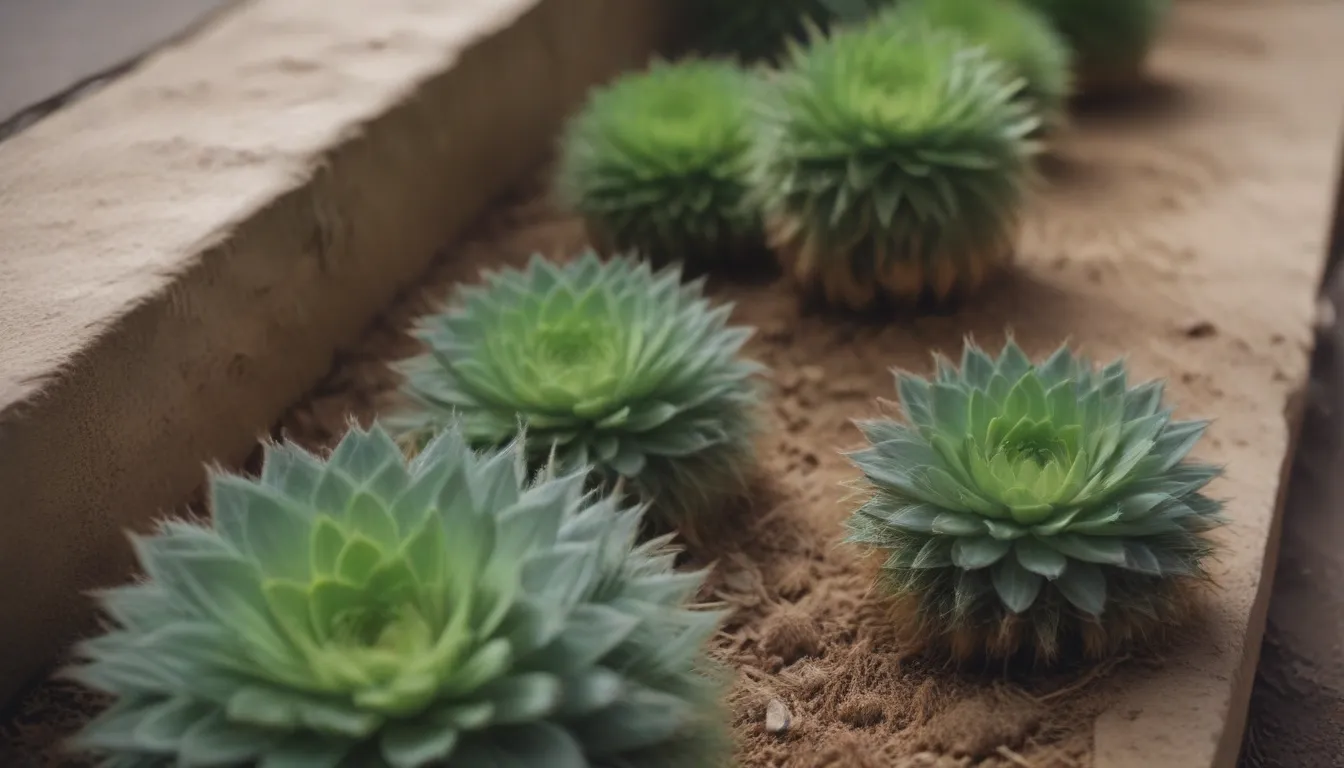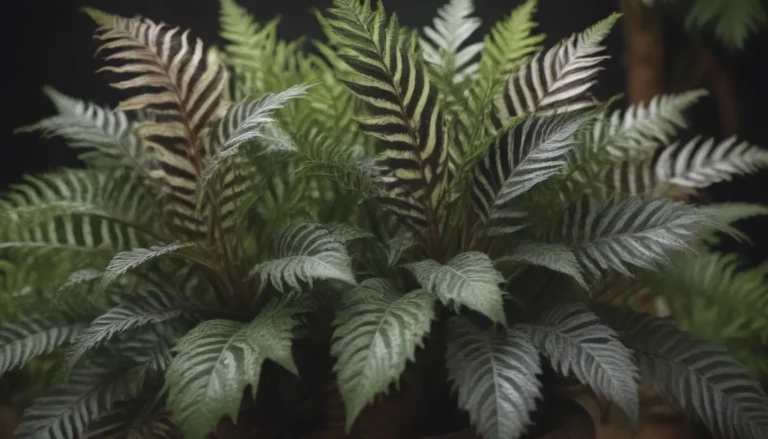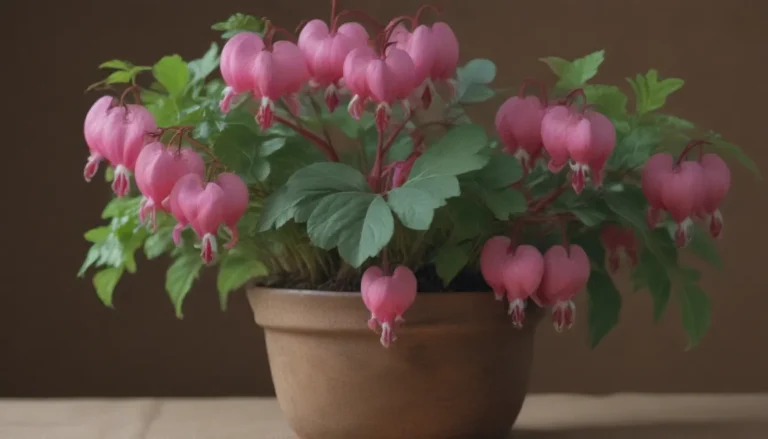Ultimate Guide to Growing and Caring for Hens and Chicks (House Leek)

If you’ve ever come across a unique plant with fleshy pointed leaves arranged in beautiful rosettes, chances are you’ve encountered hens and chicks, also known as house leek. These succulents are not only aesthetically pleasing but also easy to care for, making them a popular choice for both novice and experienced gardeners.
In this comprehensive guide, we will dive into everything you need to know about growing and caring for hens and chicks, from light and soil requirements to propagation and common issues. So grab your gardening gloves and let’s get started!
What are Hens and Chicks?
Hens and chicks are a type of succulent known for their mat-forming growth habits, with the parent rosette resembling a “hen” and the smaller rosettes around it called the “chicks.” These plants thrive in temperate to warm, dry climates and prefer full sun to light shade. Their adaptability makes them an excellent choice for landscapes with rock gardens, wall crevices, and areas where other plants struggle to survive.
Hens and Chicks Care
Taking care of hens and chicks is relatively low-maintenance, with minimal requirements for optimal growth. Here are the main care considerations you should keep in mind:
Light
- Grow your hens and chicks plants in full sun, providing at least six hours of sunlight daily for optimal coloration and offsets.
- Partial shade can also work, especially in hot, dry climates.
Soil
- Hens and chicks prefer sandy or gravelly soil that is well-draining.
- If your soil is heavy, amend it with gravel or sand to improve aeration and drainage.
- Use a neutral soil mix or a succulent/cacti-specific mix for container plants.
Water
- Hens and chicks are drought-tolerant and can go weeks without watering once established.
- Water newly transplanted plants to help them establish roots, then water sparingly.
- Check the soil’s dryness before watering to prevent over-watering.
Temperature and Humidity
- Hens and chicks thrive in temperatures between 65 and 75 degrees Fahrenheit.
- They can tolerate a wide range of humidity levels and are well-suited for dry climates.
Fertilizer
- Use a slow-release fertilizer designed for succulents or cacti, low in nitrogen, and rich in beneficial soil microbes.
- Avoid over-fertilizing to prevent nutrient imbalance.
Types of Hens and Chicks
Hens and chicks are available in various species and cultivars, each with unique characteristics:
- Sempervivum tectorum var. arvernense: Features leaves covered with velvet-like hairs.
- Sempervivum tectorum var. tectorum: Smooth leaves edged with hairs.
- Cultivars: ‘Bernstein’, ‘Big Blue’, ‘Black’, ‘Terracotta Baby’, ‘Claudia’, ‘Herringer Rose’, ‘Launcelot’, ‘Morgenrote’, ‘Pelora’, and more.
Propagating Hens and Chicks
Propagating hens and chicks is simple and rewarding. You can easily multiply your plant by splitting the offsets from the parent plant. Here’s how you can propagate hens and chicks:
- Gently separate the offsets from the parent plant.
- Ensure each offset has its roots intact, if possible.
- Plant the offsets in well-draining soil and watch them grow into new hens and chicks plants.
How to Grow Hens and Chicks From Seed
Apart from propagation through offsets, you can also grow hens and chicks from seeds produced by mature plants. Keep in mind that seeds from hybrid plants may not produce offspring true to their parents. Here’s how you can grow hens and chicks from seeds:
- Collect seeds from mature plants.
- Sow the seeds in well-draining soil.
- Provide adequate sunlight and water for germination.
Potting and Repotting Hens and Chicks
Hens and chicks thrive in pots or containers, making them versatile indoor and outdoor plants. Follow these tips for successful potting and repotting:
- Use a shallow, well-drained container filled with a cactus/succulent potting mix.
- Opt for a clay pot to wick moisture and prevent overwatering.
- Plant hens and chicks alone or in a mixed succulent garden for added visual interest.
Overwintering Hens and Chicks
While hens and chicks are hardy plants, they may need protection from wet winter conditions. To ensure your plants survive the winter months:
- Clean away ground debris to prevent moisture accumulation and rot.
- Place outdoor potted plants in sheltered locations or move them indoors during extreme cold.
Common Pests & Plant Diseases
Hens and chicks are susceptible to pests like mealybugs and aphids, especially in indoor or overly moist conditions. Combat infestations by:
- Using cotton swabs or neem oil to remove pests.
- Ensuring proper drainage to prevent root rot.
- Keeping plants in dry conditions to avoid fungal leaf spots.
How to Get Hens and Chicks to Bloom
While hens and chicks are primarily grown for their foliage, flowering can add an extra touch of beauty to your garden. Here’s how you can encourage hens and chicks to bloom:
- Understand the appearance and scent of hens and chicks flowers.
- Stress the plant by overcrowding or changing light/temperature conditions to induce flowering.
- Care for the plant after it blooms to maintain its health and longevity.
Common Problems With Hens and Chicks
In ideal conditions, hens and chicks are resilient plants. However, a few issues may arise, usually due to overwatering. Here are some common problems and solutions:
- Plant Turns Mushy: Overly wet conditions can cause root rot. Improve drainage and remove affected sections.
- Rosettes Die Back: Natural after flowering, but can indicate excessive water or fertilizer. Ensure well-drained soil for healthy regrowth.
In conclusion, hens and chicks are versatile succulents that can add beauty and charm to any garden. By following the care tips outlined in this guide, you can enjoy healthy, thriving hens and chicks plants for years to come. So go ahead, plant some hens and chicks, and watch your garden come to life with these unique and resilient succulents!





